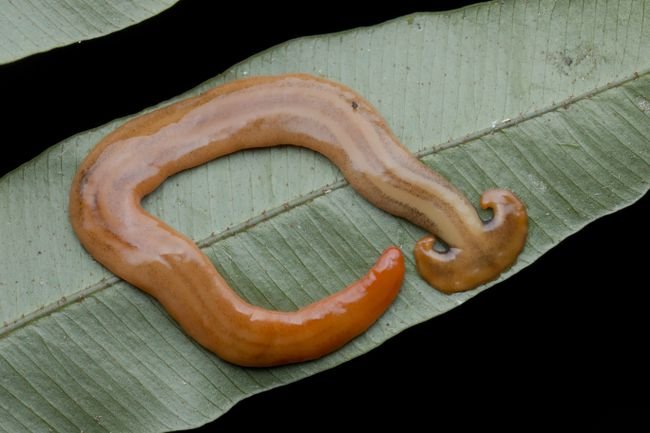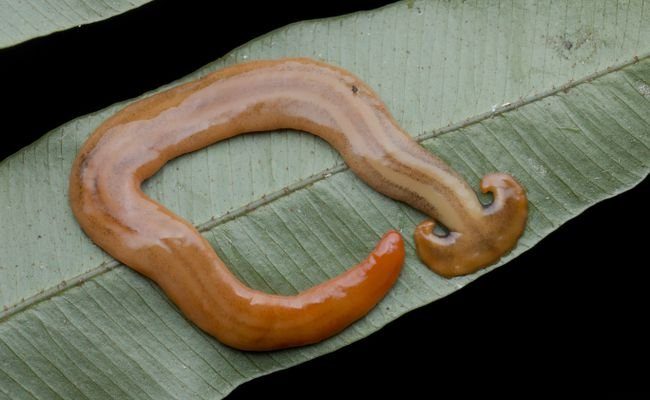
In this article, we’re going to dive into the world of hammerhead worms. We’ll explore whether they’re toxic, how they affect pets and wildlife, and what you should keep in mind if you encounter one. So, grab a comfy seat and let’s get started.
What Are Hammerhead Worms?
Hammerhead worms, scientifically known as *Bipalium*, are flatworms belonging to the phylum Platyhelminthes. These worms are typically found in warm, damp environments and can grow to impressive lengths, sometimes up to a foot! Their most notable feature is their uniquely shaped head that resembles a hammer, which is where they get their name.
These worms come in a variety of colors, including shades of brown, green, and even vibrant blue. Their appearances can vary significantly based on their habitat and diet. While they might look intriguing, their unusual shape and size can make them a bit unsettling to see wriggling around in your garden.
It’s important to note that hammerhead worms are **predatory**, primarily feeding on smaller soil organisms like earthworms. So, if you happen to see one, it’s likely hunting for its next meal. But just because they’re predators doesn’t mean they’re harmful to everything around them.
Are Hammerhead Worms Poisonous to Pets?
You might be wondering, “Can my dog or cat get sick if they mess with a hammerhead worm?” The good news is that hammerhead worms are not considered poisonous to pets. They do produce some toxins that help them capture their prey, but those toxins aren’t harmful to larger animals like dogs, cats, or even humans.
However, that doesn’t mean you should let your furry friend take a closer sniff or a nibble. Just like any other creature in the garden, they could potentially have bacteria or parasites. If your pet does end up playing with or eating one, you might see some mild digestive upset, like vomiting or diarrhea, but serious reactions are rare.
In general, it’s best to keep an eye on your pets when they’re outdoors, especially in areas where they might encounter unusual wildlife. You wouldn’t want them to accidentally munch on something that doesn’t belong in their diet.
Effects on Wildlife
So, how do hammerhead worms impact local wildlife? While they’re not outright toxic, they can disrupt the ecosystem in certain ways. These predatory worms primarily feast on earthworms, which are beneficial for soil health. By reducing the population of earthworms, hammerhead worms can impact soil aeration and nutrient cycling.
When earthworms disappear, it creates a chain reaction. Birds, amphibians, and other wildlife that depend on earthworms for food may find it harder to survive. So, while the hammerhead worm isn’t a direct threat to these animals, its presence can lead to broader ecological consequences.
Interestingly, some animals have developed a sort of tolerance to these worms. Certain species of birds have been observed eating them without apparent harm. But as with pets, it’s usually best for wildlife to steer clear of these unusual flatworms whenever possible.
How to Identify Hammerhead Worms
If you’re curious whether you’ve encountered a hammerhead worm in your backyard, identifying one is fairly straightforward. Here are some key characteristics to look out for:
- Shape: Their heads are flat and wide, resembling a hammer or a spade.
- Color: They often display vibrant colors. Depending on the species, you might see browns, blues, or greens.
- Length: They can grow quite long, often reaching between 6 to 12 inches.
- Movement: They move in a slithering motion, which can look quite different from the way earthworms move.
If you see something that fits this description, it’s likely a hammerhead worm. Don’t panic! Just observe it from a distance and keep your pets away from it.
What to Do If You Find One
If you do happen upon a hammerhead worm in your garden, what should you do? Here’s a simple plan:
1. **Observe:** Take a moment to watch the worm. It’s an interesting creature and doesn’t pose an immediate threat.
2. **Keep Pets Away:** Make sure your pets don’t try to sniff or eat the worm. It’s better to be safe than sorry.
3. **Remove It Carefully:** If you choose to remove it, use a shovel or a stick to gently scoot it into a container. Make sure you’re wearing gloves, just in case.
4. **Relocate:** Take the worm to a nearby natural area away from your garden. This way, it can continue its life without disrupting the ecosystem.
5. **Wash Your Hands:** After handling it, wash your hands thoroughly to avoid any potential bacteria.
While they are fascinating creatures, it’s important to treat hammerhead worms with respect and caution, just like you would with any other wildlife.
Hammerhead Worms: A Unique Addition to Your Garden
While hammerhead worms might seem alarming, they can actually be a part of a vibrant garden ecosystem. As predators, they play their role in controlling the populations of other soil creatures. However, their impact can lead to a delicate balance.
If you notice these worms becoming more common in your garden, it might be worth investigating. Are there enough earthworms and other beneficial organisms? If not, consider introducing more natural diversity into your soil system. This could involve composting, adding organic material, or planting a variety of plants that attract different wildlife.
In doing so, not only do you help maintain a balanced ecosystem, but you may find yourself enchanted by the sights and sounds of your garden. Watching different creatures interact can be a wonderful way to connect with nature.
Final Thoughts
To sum it all up, while hammerhead worms are intriguing and may look a bit bizarre, they’re not typically harmful to pets or wildlife in a direct way. However, their predatory nature can affect earthworm populations and the ecosystem at large.
If you encounter one in your garden, take note but also remember to keep your pets at bay. With a little awareness, you can enjoy the beauty of these unique creatures without putting your pets or local wildlife at risk. After all, nature is full of surprises, and learning about these peculiar inhabitants can only enhance our appreciation of the world around us.

